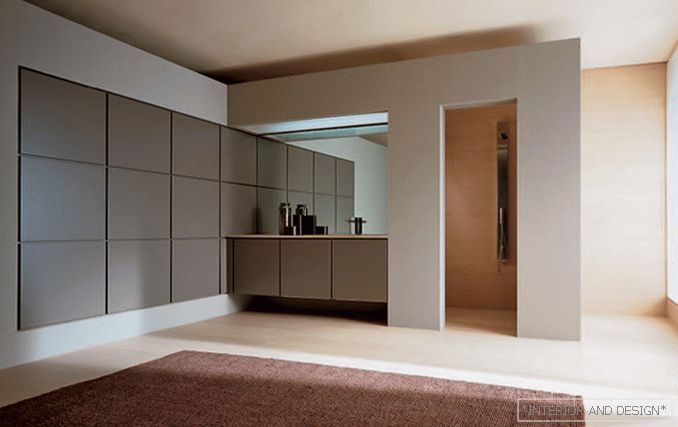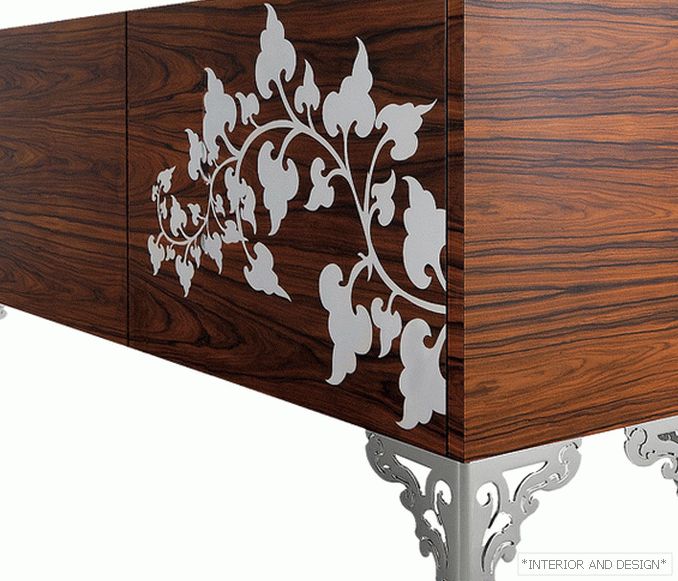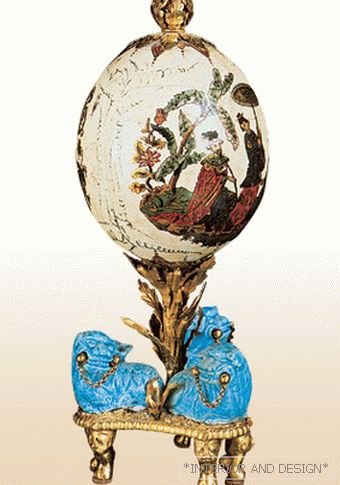 Whatever may be said about the diversity of greenhouses, in fact, there are only two types: capital and non-capital. All the others are varieties. Greenhouses differ in their design: wall, tree-lined, large-sized arched type and small-sized arched type.
Whatever may be said about the diversity of greenhouses, in fact, there are only two types: capital and non-capital. All the others are varieties. Greenhouses differ in their design: wall, tree-lined, large-sized arched type and small-sized arched type.
Winter greenhouse — это не просто место для посадки овощей и цветов, но и показатель мастерства садовода-огородника. Организация и обустройство зимней теплицы — процесс очень непростой, требующий знаний, специальных навыков и подготовки.
Content
- 1 Types of winter greenhouses
- 2 Choosing the right option
- 3 Selection места для теплицы
- 4 Construction of a gable deep greenhouse
- 5 Heating
Types of winter greenhouses
- Capital view of the greenhouse necessarily built with the foundation. In the center there is a trench, an in-depth passage, necessary for the accumulation of cold air, avoiding it to the roots of plants. The design of the greenhouse allows you to warm up quickly, which makes it possible to plant seedlings 2–3 weeks earlier.
- Conditionally capital (non-capital) the type of the greenhouse makes it easy to dismantle and move the structure to any other place. For the manufacture of this type is used polycarbonate, metal profile, bolted connections. Basis - piles. In all other respects, the whole construction is similar to the capital one, but without thermal insulation and a central trench.
All other types of greenhouses - transitional options. But only in a greenhouse of the capital type, it is possible to organize both lighting and heating.
Winter greenhouses differ according to the following parameters:
- By functionality. You can grow not only traditional vegetables, but also exotic crops. Before building a greenhouse, it is important to decide which crops will be grown. The whole process of arranging the greenhouse, external and internal, depends on it.
- By location to the ground. All heated greenhouses are divided into 3 main types: recessed into the ground, made on the surface, equipped on the upper part of the building (shed, garage
etc. ) - By architectural the decision. Among the existing options for greenhouses stand out one-, two-, three-slope, arched, near-wall, combined.
Choosing the right option
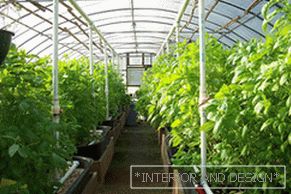 Selection A suitable option depends entirely on taste and financial capacity, and the size of the greenhouse will also be important. Still greenhouses differ:
Selection A suitable option depends entirely on taste and financial capacity, and the size of the greenhouse will also be important. Still greenhouses differ:
- By виду строительных материалов. For the manufacture of greenhouses used brick, wood materials, metal or PVC frame. Also often used glass and polycarbonate coating. The combined designs are very popular.
- By типу heating. There are solar thermal, biofuel greenhouses, greenhouses with technical heating (stove, gas, electric, water).
- Planting. Plants in the greenhouse are planted directly in the ground or in special containers, placed on the shelves.
Selection места для теплицы
When choosing a place for a future greenhouse, 2 main factors are taken into account:
- Lighting. For normal growth and development of plants need good lighting. In case of insufficient lighting, it will be impossible to grow light-loving crops (tomatoes, peppers, cucumbers). The best place for the equipment of the winter greenhouse will be the location in length from west to east. This moment is especially important when setting up the solar greenhouse.
- Wind direction. If the area is dominated by cold winds, it will be necessary to protect the greenhouse. With proper organization, you can significantly save on heating. Access to the greenhouse should be wide and convenient. It is necessary for construction and subsequent operation.
In the presence of fencing Consider an important factor. The fence should not close to the greenhouse, in order to avoid turbulence from wind flows. If the height of the greenhouse is 2.5 m, then the distance between the greenhouse and the fence should be not less than 7−8 m. The most ideal option would be a distance of 15−20 m.
Construction of a gable deep greenhouse
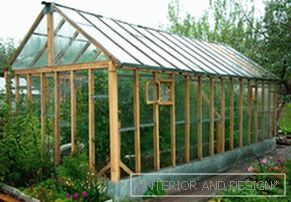 This is the most universal теплица, которая подходит и для средних широт России, и для более сурового климата. В теплицах данного типа спокойно можно выращивать огородные, садовые, экзотические культуры. Gable теплица удобна, имеет длительный срок эксплуатации. Сооружение надежно и экономично.
This is the most universal теплица, которая подходит и для средних широт России, и для более сурового климата. В теплицах данного типа спокойно можно выращивать огородные, садовые, экзотические культуры. Gable теплица удобна, имеет длительный срок эксплуатации. Сооружение надежно и экономично.
Gable теплица состоит из 2-х помещений: vestibuleа и оранжереи.
Тамбур служит как рабочее помещение, где устанавливается система обогрева (котел), и если все процессы обслуживания теплицы автоматизированы (полив, освещение, проветривание), то и блок управления. Площадь vestibuleа должна составлять не меньше 1,5 м (оптимально 2−2,5 м).
Also vestibule используется для приготовления земляной смеси, для хранения садового инвентаря и пр. Для строительства vestibuleа используется кирпич. Для теплоизоляции лучшим материалом будет пенопласт или минеральная вата. Roof vestibuleа покрывается непрозрачным материалом, таким как профнастил, кровельное железо
Partition между vestibuleом и оранжереей делается капитальной. В качестве материала может использоваться пластиковый или металлопластиковый профиль.
When building a deep construction of a greenhouse, the main rule should be observed - the soil is selected to a depth of 80 - 90 cm (depth of the freezing layer). This rule is also used for the foundation of shallow greenhouses.
- Foundation. On solid ground, the foundation is poured to a depth of 45 - 50 cm.
- Walls. When building walls in a greenhouse, one brick is used (the wall thickness should be 25 cm).
- Window for installation frames are located at a height of 50 - 60 cm above ground level. The width between the windows should be 50 - 75 cm or 2 -3 bricks. This will provide the plants with additional lighting. Be sure to have a ventilation transom.
- Roof. The gable roof form is one of the most convenient. It provides unimpeded flow of water. Tilt angle of 20 -25 degrees.
For roofing equipment, lower strapping bars are laid on side walls. Then to the strapping bars attached to the calque bar using rafters.
Materialsrequired for roofing:
- Strapping bars and ridge beams (section 120 × 150 mm);
- Rafters timber (cross section 70 × 100 mm).
To ensure the free penetration of light to the roof, glass 4 mm thick is traditionally used. Glazing of the roof is carried out by questioning (40 × 75 mm) with chutes for condensate discharge.
One of the most popular materials for roofing today is polycarbonate honeycomb. If you compare it with glass, the glass is very losing in many ways. Polycarbonate greenhouse will last at least 15 years. This is a warm and secure room.
Glass laying is carried out from the lower strapping bar, moving upwards. For putty used on the basis of linseed oil or plastic mixture. To protect the walls from flowing water installed a visor. The offset of the visor from the wall is 6-8 cm.
Heating
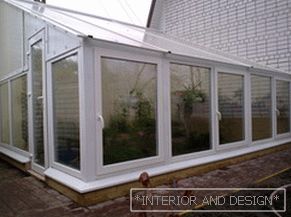 Selection heating for a greenhouse it depends entirely on the size of the room. For greenhouses with an area of 15−20 square. m suitable and stove heating. But for heating large greenhouses, there are the following options: electric, biofuel, water heating.
Selection heating for a greenhouse it depends entirely on the size of the room. For greenhouses with an area of 15−20 square. m suitable and stove heating. But for heating large greenhouses, there are the following options: electric, biofuel, water heating.
With the system water heating используется водонагревательный котел, трубы и бак. Трубы размещаются или непосредственно в грунт (при глубине 40 см), или сверху, под стеллажами.
Electric Heating is divided into 3 types: cable, air and infrared heating. Cable settles on the type of floor heating. Air is carried out with the help of fan heaters. Infrared heating is produced by infrared heaters placed under the ceiling.
Heating biofuels is the most economical type of heating. Soil and air are heated in the process of heat release during the decomposition of organic matter. Among the most used biomaterials distinguish:
- Horse manure - stores a temperature of 33−38 degrees for 70–90 days;
- Cow dung - 20 degrees 100 days;
- Overfired bark - 25 degrees 120 days;
- Sawdust - 20 degrees 2 weeks;
- Straw - 45 degrees 10 days.
Biofuels placed in the ground, under the fertile layer. Using biofuels, you need to remember about the level of acidity, it affects the quality of the earth. The best level is cow manure (6–7 pH). Bark and sawdust create acidic medium, horse dung - alkaline. Biofuels после употребления можно использовать как перегной.
If the construction of the greenhouse complied with all technical standards, over the years, it will delight good yields.

